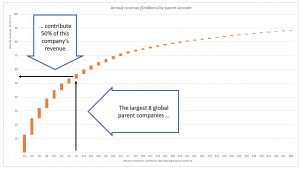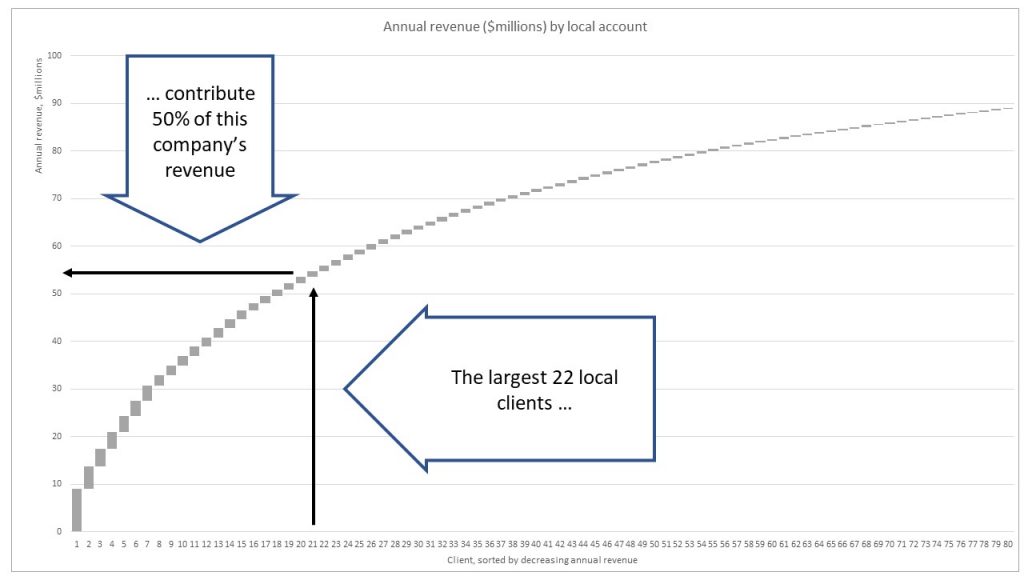Market focus – without focusing on the market
What is the opportunity?
Can you get your sales force to focus on the money, without having to spend money focusing on your market? Yes. As long as you have company revenue for each of your clients, you can start to see if a large account management strategy is appropriate for you.
Clients often see their customers through the lens of their billing information. As a result, what should be a single large global customer is seen as many local companies, each represented by its local name. Many companies review their client revenue structure, find more than 20 contribute to their top 50% of revenue so select a locally led sales strategy. Their sales force then spreads its time amongst small regional accounts, talking to their technologists, buyers and friends. Meanwhile, senior account relationships are neglected.
To get past this, the approach is simple. Assign each of the regional companies to its parent and sum the revenue by its parent company. Then sort all of the parents by revenue size and display them on a graph. The results can be transformative, changing the client landscape from one where each client does not have enough revenue to justify a major account strategy to one where running a global account strategy is not just viable, it is vital.
(Before going on, we need to be honest about this approach. Many of you will have already undertaken it, so this is not new to you. But if you haven’t, while this way of looking at your accounts can be hugely insightful, it is still making a classic mistake – we are working with the revenue we get and are taking no account of the revenue we could get through a market assessment of each account’s potential. But more of this later.)
A business example
Let’s look at an international company that used this approach. The previous year’s total revenue was just under $110million. Of this, the largest 22 accounts accounted for 50% of its revenues and on this basis, a regional first account management strategy was being used – local sales chased, local revenue, using locally developed pitches that met a local need.
However, when the global accounts were summed using parent company, a very different landscape was discovered. Suddenly 8 accounts are responsible for generating 50% of the company’s revenue justifying a change in sales strategy, demanding a single global value proposition and assigning key account managers to manage these key accounts. Senior management started to take a more active role in creating senior relationships and the company started the shift from shifting products to local buyers to creating business solutions for international need.

When revenue is summed by the parent company, the need for a large account management strategy is clear
Of course, those of you with sharp eyes will have noted that the maximum graphed revenue in this company stops at $95million. This is because there is a significant revenue tail in the account, but how this was addressed is another story …

